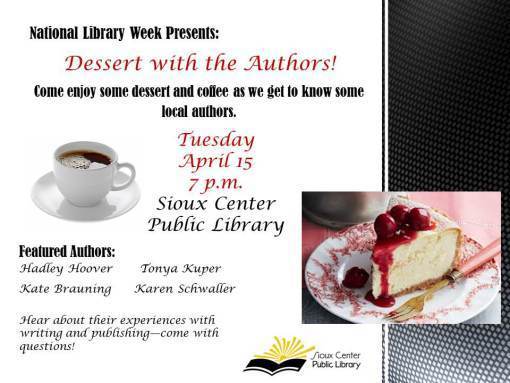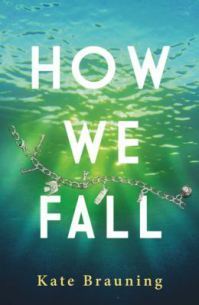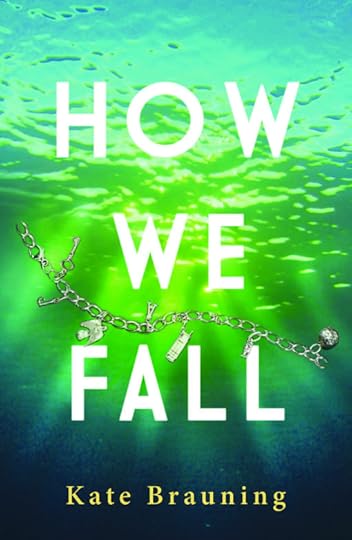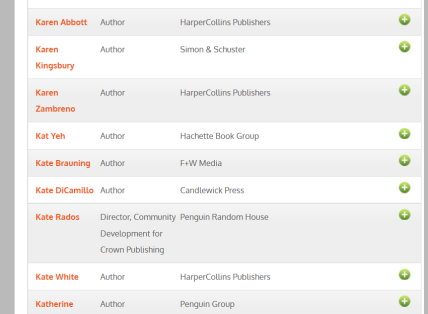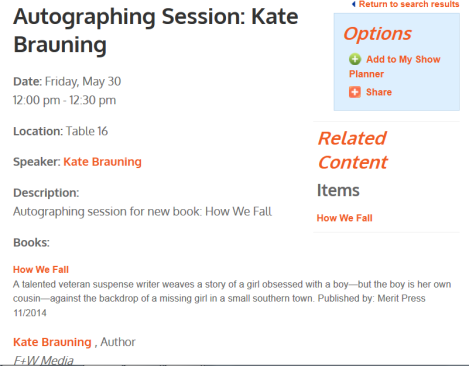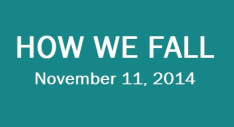Kate Brauning's Blog, page 3
June 10, 2014
So, Why Did I Write A First Cousins Romance?
When people hear the pitch for my debut YA novel, HOW WE FALL, one of the first questions I usually get asked is “so, why did you write a cousins romance?” In case you’re interested, too, I thought I’d write up something about it.
Yes, it’s an actual love story about first cousins. No, I didn’t write it to support cousin marriage in particular, or because I ever had a relationship with my cousin (I didn’t, and neither did any of my siblings or cousins). Here’s the quick pitch:
In the wake of her best friend’s disappearance, 17-year-old Jackie throws herself into an obsessive relationship with her cousin, only to find out her best friend’s secrets might take him, too.
So, yes, there’s a bit of tragedy to it. And they don’t start out with an entirely healthy relationship. If you’ve read How I Live Now, Flowers in the Attic, or Forbidden, you know those kinds of love take a toll on people. It’s not entirely tragic, though, and the relationship isn’t an abusive one. It’s a flawed one, and a difficult one. (And most relationships are flawed and difficult.)
So, why did I write about first cousins?
1) I love best friend romances. I think they’re sweet, and deep, and full of little tensions. There’s not much like discovering the person who knows you best is the one you want to share your life with. To me, HOW WE FALL is primarily a best friend romance, even though it’s a taboo one. I liked the idea of writing a sort of extreme best friend love story, and the cousin dynamic seemed like a fascinating one to use. For a lot of people, the cousin relationship is a unique one. Cousins know your family, but don’t necessarily share the same baggage. They know your siblings and parents and the special aggravation that can come with them. A lot of people grew up seeing their cousins frequently, so there’s no use having pretensions– they’ve known you since you were little. They’ve been there, they know you, and they’ll be there for the rest of your life.
2) I mean, why not write about cousins? a) It’s not illegal. Cousin marriage is legal in about half the states, and is only considered incest in a few. b) It happens. Some form of cousin marriage accounts for 20% of marriages worldwide. I personally know of three cousins marriages. c) People do write about it. We have a history full of famous cousin marriages, as well as a number of famous novels (including Mansfield Park) where cousin marriage is part of the story. (Also, hey, if you haven’t seen Arrested Development, you really should. Clever, hilarious, great fun.) d) Cousin crushes happen a lot. One thing I find really interesting is the stories people tell me when they hear about it. Turns out, a lot of people kissed their cousin when they were little and a lot of people crushed on an older cousin.
Yes, there are safety issues, similar to other forms of nontraditional relationships, and yes, there are genetic issues, though the genetic issues with children from first cousin marriages are widely exaggerated. The risk of birth defects for children of first cousins is only 2% higher than for the general population. Your own personal genetic history plays a bigger role in your children’s birth defects than marrying your first cousin. Author John Green actually created a very interesting video about cousin marriage. Skip to about minute 7 for his comments on genetic and ethical issues.
3) There’s a lot of conflict. The problems and issues surrounding cousin relationships are exactly why I wanted to write about it. Conflict makes a story, right? Usually, the deeper the struggle, the more fascinating the story. We’ve seen that with other prejudices– biracial, cross-cultural, and same-gender relationships, relationships crossing political, religious, and status lines, and just about any other boundary we put up between people. When the conflict is an immoveable fact with deep-rooted prejudices and potential to harm your family, that’s a significant and difficult struggle. The problems with cousin relationships are a huge part of why I wanted to write about it. It would test my characters in ways not much else could.
4) It’s not really about cousins. That’s the fabric, sure. But to me, How We Fall is about self. About finding out what you really want out of life, and being brave enough to go after it. It’s about emotional dishonesty, and courage, and roots, and missed opportunities changing who you become. And really, I hope it’s a fun read. There’s humor, produce farming, and Casablanca quotes, and flirting, friendship, and sisters. It’s about parents, and being uprooted, and sneaking off in the dark, and Hitchcock movies. It’s about a girl and her family, and the guy she can’t/won’t/desperately wants to go after.
So, that’s a peek into why I wrote the novel. And hint, it comes out November 11, and if you pre-order it now, you’ll be one of the first to get it. :) (You can also add it on Goodreads.)
Have you read any other taboo YA? I loved Unteachable by Leah Raeder, and of course the three sibling/cousin stories I mentioned above: Forbidden, Flowers in the Attic, and How I Live Now. Do any others come to mind?

May 26, 2014
Amazon: Not Cheaper or Faster For Buying Books?
Popular myth can be a beast. I’ve been hearing from my social circles a lot lately that Amazon is faster, cheaper, more convenient: “I love Barnes and Noble, but you know. Amazon has everything and it’s cheaper.” I thought that, too, if I stopped long enough to process it. But I haven’t bought books from Amazon for a while, so with chasing down buy links for my novel releasing this year, and stalking my critique partners’ books online, I started to notice something.
So, I tracked down all three of our upcoming releases to compare purchase price, shipping cost, and shipping times. Take a look:
From Powell’s
(same price for Joseph-Beth Booksellers and Books Inc. for all 3 titles.)
The Hit List: $9.95, paperback.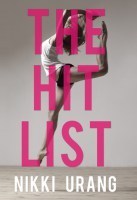
Anomaly: $9.99, paperback.
How We Fall: $17.99, hardcover.
Shipping is $3.99 for economy mail, no matter how many books you buy. $50 order total or more, and shipping is free. Arrives in 4-9 business days for economy mail or 2-7 for standard mail.
From Barnes and Noble:
The Hit List: $8.25, paperback.
Anomaly: $9.99, paperback.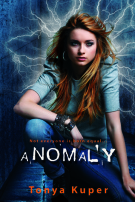
How We Fall: $13.31, hardcover.
Free shipping on orders over $25 for qualifying items (most new books). Arrives in 2-6 business days. Great membership program that’s free for 2 months, then $25 a year after that. Free shipping and arrivals in 1-3 business days, 40% off hardcover bestsellers.
Books-A-Million:
The Hit List: $8.25, paperback.
Anomaly: $9.99, paperback.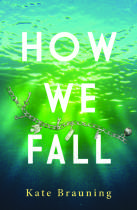
How We Fall: $13.31, hardcover.
Arrives in 3-7 business days. Free shipping for club members ($25 a year), or $3.00 plus $0.99 per item for non-members.
Book Depository:
The Hit List: $12.78, paperback.
Anomaly: $8.93, paperback.
How We Fall: $16.09, hardcover.
Free shipping worldwide, customer responsible for local shipping and taxes. Delivery times vary depending on country.
Amazon:
The Hit List: $8.42, paperback.
Anomaly: $8.99, paperback.
How We Fall: $13.31, hardcover.
Shipping is $4-5 for one book for non-members. Free shipping on orders over $35. Arrives in 4-5 days. Amazon Prime allows free 2-day shipping for eligible items, $99 a year.
Things to note:
THE HIT LIST is more expensive from Amazon than from B&N and BAM, and only about $1.50 more expensive from most indies. Varying shipping costs and a member program can easily make up that difference and even save you money, especially since Amazon’s prime membership is so much more expensive than B&N’s.
ANOMALY’s price varies by $1 no matter where you buy it. Amazon’s list price is $1 cheaper, but shipping is $4-5 if you aren’t a member. The cheapest option would be to have a B&N or BAM membership, or even cheaper, to bulk-order your books from Powell’s for 0 shipping costs and 0 membership costs.
HOW WE FALL’s price is more expensive from most indies, but B&N, BAM, and Amazon all have it for exactly the same price. Without memberships, the cheapest option is to buy it and another book or two in a $25 purchase from B&N. With memberships, the cheapest option is B&N. As a single-purchase item with no memberships, the cheapest option is Books-A-Million.
Amazon isn’t the cheapest option anymore. It isn’t the cheapest way to buy any of these books, once you count in shipping.
Amazon isn’t the fastest option, either, depending on your location. Barnes & Noble ships to nonmembers in 2-6 business days. Amazon’s nonmember shipping gets to me in 4-5 business days.
Amazon isn’t necessarily the most convenient, either. All these stores have fully functional websites and stock just about every book I could think to search. Amazon may not even have the book you want, given the issue with Hachette, and given that “shares are down sharply this year and analysts are cutting earnings forecasts” (see New York Times article linked before quote).
Even Amazon’s membership isn’t the best membership deal. B&N has a much cheaper per-year cost and greater discounts on books for members. Even for nonmembers, B&N’s “free shipping on $25″ is a great deal. I almost never order one book and ship it by itself, so this is convenient, cheap, and quick for me. Powell’s offers a similar deal for $50 order total (just place bigger orders less frequently; same cost.) with similar shipping times. Amazon’s shipping times and “free shipping on $35″ isn’t necessarily cheaper, faster, or more convenient.
No matter how you add it up, Amazon is operating within slim margins more or less expensive than any of these booksellers.
I didn’t calculate ebook costs, as ebooks for these 3 aren’t up yet at all of these locations and I don’t typically buy ebooks if it’s a book I really want to own. Not having shipping and being able to click and have the ebook at a no-shipping price is great, and might tip the scales one way or the other, especially depending on what e-reader you have. (Though ANOMALY’s ebook is $5.99 at both B&N and Amazon.) And true, this is only based on three books.
I should also note that while you can buy writing/craft materials, games, books, music, and movies at many bookstores, especially the large ones, many more categories of products are available at Amazon. The wide variety available at Amazon does make their $99-a-year membership program more valuable overall, if you tend to order a lot of non-craft/media items online. I don’t. Clothes, food, furniture, gifts– I pick those out by hand. Even Christmas shopping, I tend to do in physical stores, because I make it a date with my husband and we get drinks and spend time discussing family members and what special item we could find for them while we browse. I wouldn’t give that up to buy most of my gifts online. So for me, Amazon’s membership is not cheaper, even given the variety of items available.
Basically, this boils down to Amazon not being a landslide better value. It just isn’t. The difference is small when it is a better value, and often it isn’t. And even when it does inch ahead in cost effectiveness, I’m going to vote with my dollars.
I have accounts at BAM, B&N, Books of Wonder, and Powells. I’m going to use them.

May 12, 2014
My Cover Reveal for How We Fall!
I’ve been waiting for this day for a while. Covers are special; they’re the face of our book, and a big determiner in whether or not our story catches the reader’s attention. This manuscript has been a long time in the making, and it’s so much fun (and stress/nervousness/excitement) to see it becoming a book. I’m so happy to be sharing the cover of HOW WE FALL with you today!
I’m also launching my author Facebook page today, and giving away two ARCs to random readers who like my page, so be sure to head over there to see the cover and enter to win an ARC!
HOW WE FALL by Kate Brauning
YA contemporary
Publication date: 11/11/2014
Publisher: Merit Press, F+W Media Inc.
ISBN-13: 9781440581793
Hardcover, 304 pages
About the Book:
He kissed her on a dare. She told him to do it again.
Ever since Jackie moved to her uncle’s sleepy farming town, she’s been flirting—a bit too much—with her cousin, Marcus. She pushes away the inevitable consequences of their friendship until her best friend, Ellie, disappears, and the police suspect foul play. Just when she needs him most, Marcus falls for the new girl in town—forcing Jackie to give a name to the secret summer hours she’s spent with him. As she watches the mystery around Ellie’s disappearance start to break, Jackie has to face that she’s fallen in love at an impossible time with an impossible boy. And she can’t let Marcus, or Ellie, go.
The Reveal!
.
.
.
.
.
.
.
.
.
.
.
.
.
Sneak Peek Page:
Chapter One
Last year, Ellie used to hang out at the vegetable stand with Marcus and me on Saturdays. This year, her face fluttered on a piece of paper tacked to the park’s bulletin board. Most weeks, I tried to ignore her eyes looking back at me. But today, Marcus had set the table up at a different angle, and she watched me the entire morning.
The day that photo was taken, she’d worn her Beauty and the Beast earrings. The teapot and the teacup were too small to see well in the grainy, blown-up photo, but that’s what they were. She’d insisted sixteen wasn’t too old for Disney.
The crunch of tires on gravel sounded, and a Buick slowed to a stop in front of the stand. I rearranged the bags of green beans to have something to do. Talking to people I didn’t know, making pointless small talk, wasn’t my thing. My breathing always sped up and I never knew what to do with my hands. It had been okay before, but now—surely people could see it on me. One look, and they’d know. Chills prickled up my arms in spite of the warm sun.
Marcus lifted a new crate of cucumbers from the truck and set it down by the table, his biceps stretching the sleeves of his T-shirt. Barely paying attention to the girl who got out of the car, he watched me instead. And not the way most people watched someone; I had his full attention. All of him, tuned toward me. He winked, the tanned skin around his eyes crinkling when he smiled. I bit my cheek to keep from grinning.
The girl walked over to the stand and I quit smiling.
Marcus looked away from me, his gaze drifting toward the girl. Each step of her strappy heels made my stomach sink a little further. Marcus tilted his head.
He didn’t tilt it much, but I knew what it meant. He did that when he saw my tan line or I wore a short skirt. I narrowed my eyes.
“Hi,” she said. “I’d like a zucchini and four tomatoes.” Just like that. A zucchini and four tomatoes.
Marcus placed the tomatoes into a brown paper bag. “Are you from around here?”
Of course she wasn’t from around here. We’d know her if she were.
“We just moved. I’m Sylvia Young.” The breeze toyed with her blonde hair, tossing short wisps around her high cheekbones. Her smile seemed genuine and friendly. Of course. Pretty, friendly, and new to town, because disasters come in threes.
“Going to Manson High?” Marcus handed her the bags.
She nodded. “My dad’s teaching science.”
Finally, I said something. “Three bucks.”
“Hmm?” Sylvia turned from Marcus. “Oh. Right.” She handed me the cash and looked over the radishes. “Are you here every day?” Her eyes strayed back to Marcus.
“Three times a week,” he said.
“I’ll see you in a day or two, then.” She waved.
I was pretty damn sure she wouldn’t be coming back for the radishes.
____
Pre-Order How We Fall: Books-A-Million, Barnes & Noble, Powell’s Books, IndieBound, Books Inc., Joseph-Beth Booksellers, Book Depository, Amazon U.S., Amazon Canada, Amazon U.K., Amazon Germany, Amazon Japan.
Head over to my Facebook author page to win an ARC!
(Open to U.S. residents only.)
About the Author:
Kate spent her childhood in rural Missouri raising Siberian huskies, running on gravel roads, and navigating life in a big family. Now living in Iowa, she is married to a videographer from the Dominican Republic, and still owns a husky. She loves bright colors, fall leaves, unusual people, and all kinds of music. Kate has written novels since she was a teen, but it wasn’t until she studied literature in college that she fell in love with young adult books. Kate now works in publishing and pursues her lifelong dream of telling stories she’d want to read. Visit her online, on Facebook, or on Twitter.

May 8, 2014
Review: CALL ME ZELDA by Erika Robuk
Review: CALL ME ZELDA by Erika Robuk
Review by Alison Doherty
Call Me Zelda
Erika Robuk
NAL Trade, 2013
Since I first read The Great Gatsby in high school, I’ve been fascinated by the Fitzgeralds – especially Zelda. In a lot of ways their story as a couple both eclipses and bolsters F. Scott Fitzgerald’s books. Lately with the resurgence of nostalgia for the 1920 s, aided by Downton Abbey and Baz Luhrmann’s film, even more people are interested in Zelda. They are interested in Zelda, the southern belle who charmed all the officers, or Zelda, the flapper who drank champagne all night and danced in fountains. CALL ME ZELDA, by Erika Robuck doesn’t focus on that Zelda. Instead the book shows her in the 1930s, trying desperately to recover from a mental breakdown and trying to forge an identity separate from her famous husband.
s, aided by Downton Abbey and Baz Luhrmann’s film, even more people are interested in Zelda. They are interested in Zelda, the southern belle who charmed all the officers, or Zelda, the flapper who drank champagne all night and danced in fountains. CALL ME ZELDA, by Erika Robuck doesn’t focus on that Zelda. Instead the book shows her in the 1930s, trying desperately to recover from a mental breakdown and trying to forge an identity separate from her famous husband.
The book succeeds in large part because it is told through the perspective of made-up character Nurse Anne Howard. Anne has a history and problems of her own, but as she gets more and more absorbed in the Fitzgeralds so does the reader. Anne eventually quits her job at the psychiatric hospital to move into the Fitzgerad’s home. She starts feeling more like a family friend than employee, but the ground in the Fitzgerald household is always shifting.
During this time, Zelda cathartically writes out memories from iconic periods of her life for Anne. While these times are fun to read about, I think it was a little too bold of Robuck to assume Zelda’s writing style. Anne joins Zelda in her obsession with finding the diaries, which F. Scott Fitzgerald stole for material for his novels and proceeded to lose. They both begin to think if the diaries can be recovered Zelda will be able to recover her identity from being mixed up with her roll as Scott’s muse and literary archetype.
Even though historical fiction hasn’t been my favorite thing to read lately, overall I really enjoyed this book. I became as absorbed in Anne’s personal story as I was in this interpretation of Zelda and Scott. It is hard to take on such iconic historical and literary figures, but I think setting the book after their success made this easier.
Both Zelda and F. Scott Fitzgerald created their own fictionalizations of this time period and Zelda’s breakdown. F. Scott Fitzgerald wrote TENDER IS THE NIGHT about a famous psychiatrist who sacrifices his career to marry one of his patients. Zelda wrote the very autobiographical SAVE ME THE WALTZ, in which she portrays the couple’s whole relationship. In fact, CALL ME ZELDA shows both characters working on these books.
If you want to learn more about Zelda I would suggest starting with either of those or checking out the biography ZELDA, by Nancy Mitford. However, if you are looking for something easier to read or have already read those books, CALL ME ZELDA, is definitely a book I would recommend. Erika Robuck has also written novels about Edna St. Vincent Millay and Ernest Hemingway, if stories about those authors sound more interesting to you.
Alison Doherty

April 24, 2014
I’m Signing At BEA!
Hey, do you know what this is? This screenshot with my name on it? It’s the list of authors signing at BookExpo America this year!
So, yes, I’ll be signing ARCs of HOW WE FALL at BEA next month! I’m so thrilled to be going, and even more exciting to be signing copies of my book. Here are the details of when and where I’ll be signing:
Are you going to BEA this year? Will I see you there?

April 17, 2014
Want to be on my street team?
Hello, readers! This is a super exciting post for me. I’m starting to build my street team, and you are invited to join. :)
In case you aren’t familiar with the concept, they can work a few different ways, depending on the author, the book, and the publishing house, but basically it’s a team of people who sign up to help promote and support a book through word of mouth. You don’t have to have a large social media platform– it’s just as helpful to suggest the book to your friends and family and do on-the-ground support. The power of fans is huge, and I’d love to have anyone involved who either has read and loves How We Fall or supports my writing. (Click the image to see the book description.)
All street team activities will be flexible and optional, but of course I want people who are enthusiastic and genuinely want to help my book succeed. I’d especially love anyone who regularly reads my blog or interacts with me on Twitter, and anyone who thinks How We Fall sounds awesome. A lot of you have been around since I first started writing on this blog and have seen me query, write new manuscripts, query again, and sign with my agent, and I’d love to have anyone who has stuck with me that long!
What kind of things might you be doing? Asking your library and bookstores to stock How We Fall, telling family and friends about it, placing preorders, adding the book on Goodreads, hosting the cover reveal, sharing teasers on Twitter, Facebook, your blog, etc.
What are the perks of being on my street team? Sneak peaks, a chance to have a character in a later book named after you, a chance to win an annotated ARC, awesome swag like bookmarks and buttons, updates about what’s going on behind the scenes, and of course, my sincere gratitude and appreciation. I’ll have a few surprises in the works, too!
Thank you to every one of you who has been reading my blog, following me on Twitter, and making a space for me to talk about my books and hear about yours. The community of writers and readers is a wonderful place to be.
How can you join? Contact me below!
[contact-form]

April 16, 2014
My Writing Process Blog Tour
Good morning! I was tagged by the brilliant Elizabeth Holloway (check out her site and her blog) in the “my writing process” blog tour. The blog tour works like this: I have four questions I have to answer about my writing process, then I nominate other writers to join the tour. They will answer the same four questions one to two weeks later. So here we go
1) What am I working on?
I’m drafting a companion novel to HOW WE FALL, about a high school dropout and an older college girl. Will’s mother disappeared after his parents’ divorce when he was eight, and he hasn’t heard from her since.
2) How does my work differ from others of its genre?
I suppose you could call it new adult, since the characters are that age range. It’s not a college book, though– it’s very much a mother-son story. Also, it’s not a story about Will and Claire getting together; they start out pretty much together and the story follows the trajectory of their relationship, which is not a smooth one.
3) Why do I write what I do?
I like complicated relationships, I guess. Really complex situations with a lot of built-in conflict where no one is entirely right and no one is clearly in the wrong. It feels more true to real life to me, and when conflict and resolution happens, I can make it more genuine. I write YA (and NA) of course, but adults and children feature heavily in all my stories so far, probably because it makes things messier to be dealing with a true-to-life set of age groups. I love having teens as main characters, though, because it’s such a volatile stage in life, and when people with few resources who are just starting to deal with their major firsts are pushed into high stakes situations, it’s fascinating to see what they’re capable of doing.
4) How does my writing process work?
It depends on the book how much I outline, but I always make myself live in the story first. I get out my markers and write a giant web of nonsense on my markerboard wall. I add possible conflicts and organic problems and conflicts for secondary characters, and all kinds of ideas for the main characters. I mull it over, erase and replace half of it. I fill out the (incredible, insightful, you must use them) worksheets in Donald Maass’s Writing the Breakout Novel Workbook. I erase and replace the whole mess on my markerboard with something that looks a little bit more like lists and a plot arc. Then I figure out which scenes happen in what order for the first third, and start writing. I like to fast-draft and save revisions for after I’m done drafting, but if the beginning feels weak or thin to me, I usually take the time to revise those first few chapters over and over until I get grounded in how the characters express themselves and what their goals are. Once I have a few solid opening chapters, I pick up speed and try to write every day or at least every other day. Before writing new material, I read what I wrote the day before and layer it a little more– boost the tension, cut lines, add in reactions and physical cues. Once I’m doing drafting, I send it off to critique partners and then ignore it while they have it. Then I compile notes once I’ve heard back from them, ask questions, cry/mope/run around excitedly while figuring out how to solve the issues, and then dig into revisions. A few rounds of this and maybe a few beta readers, and I send it off to my agent! At which point, the revision process repeats.That’s pretty much how I work!
And now to tag some other great writers–
Alex is a graduate student and a writer. She does math during the day and writes at night. She pretty much likes anything you can put on paper, whether it’s letters, numbers, drawings, music, weird scribbly things and/or souls. Right now her writing interests run the gamut in YA fiction: she’s always been a fantasy and magical realism girl, though recently she’s gotten into contemporary. You can find her on Twitter or on her website.
Kelly graduated from the University of New Mexico cum laude with a BA in English Literature and a minor in Religious Studies. She has worked in the restaurant industry, as a legal assistant for a civil rights lawyer, in churches as a young adult coordinator and as a church secretary, as an operations coordinator for a non-profit volunteer organization, and most recently in campus ministry. She is now a stay-at-home mom who is in the process of discovering the next call of God upon her life. You can find her on Twitter or on her website.
What’s your writing process? Is it anything like mine?

April 15, 2014
Release Day for The Bone Church!
I’m thrilled to welcome my wickedly talented client, Victoria Dougherty, to the blog today to talk about The Bone Church. Victoria’s writing turns everyday things on their heads in such a ghostly, atmospheric way, and her ability to craft a line is stunning. Welcome, Victoria, and happy release day!
Kate, thank you so much for having me on your blog. You always inspire me to do my best work and I’ll endeavor to keep up those expectations here :).
In addition to what I write, you’ve asked me to tell you all a little bit about why I write what I write. That’s a sit up for half the night with a bottle of wine kind of conversation, and I wish we could do this in front of a fire, with a plate of fancy cheeses, but I’ll give it my best shot with you there and me here:
Having grown up with a lot of drinking and smoking and storytelling at my dinner table, I guess I was predisposed to continue that tradition somehow. And these were crazy stories – dangerous, true-to-life James Bond-style epics told by the eccentric, high-wire act people that made up my family. Women who’d fled across armed borders, hid Jews, learned they were Jews, had guns held to their heads, knew how to double-cross and how to cross their legs to get you to notice. Men with deep wrinkles around their eyes, a wry smile and a code they lived by, except when they didn’t. I loved their stories – their Cold War stories. Ones that played out like an Escher drawing and were filled with all manner of subterfuge. Tales with real emotional stakes that forced life and death decisions. The kinds of decisions that can never be neat or clean and affect generations. Given that kind of background, I don’t see how I could have become a writer of, say, navel-gazing post-modern novels.
So, like most writers, I write what I like and what I know.
My work is atmospheric and often blurs the line between illusion and reality. In my novel, The Bone Church, for instance, my Jesuit protagonist suffers from a series of extraordinary visions. Otherwise, I strive for a pretty straightforward Daniel Silva meets Alan Furst style thriller. I don’t stray too far off the reservation. I like my thrillers to be, well…thrillers.
One of the many reasons to read The Bone Church is that it’s such a unique, captivating story. Check out the blurb:
 In the surreal and paranoid underworld of wartime Prague, fugitive lovers Felix Andel and Magdalena Ruza make some dubious alliances – with a mysterious Roman Catholic cardinal, a reckless sculptor intent on making a big political statement, and a gypsy with a risky sex life. As one by one their chances for fleeing the country collapse, the two join a plot to assassinate Hitler’s nefarious Minister of Public Enlightenment and Propaganda, Josef Goebbels. But the assassination attempt goes wildly wrong, propelling the lovers in separate directions.
In the surreal and paranoid underworld of wartime Prague, fugitive lovers Felix Andel and Magdalena Ruza make some dubious alliances – with a mysterious Roman Catholic cardinal, a reckless sculptor intent on making a big political statement, and a gypsy with a risky sex life. As one by one their chances for fleeing the country collapse, the two join a plot to assassinate Hitler’s nefarious Minister of Public Enlightenment and Propaganda, Josef Goebbels. But the assassination attempt goes wildly wrong, propelling the lovers in separate directions.
Felix’s destiny is sealed at the Bone Church, a mystical pilgrimage site on the outskirts of Prague, while Magdalena is thrust even deeper into the bowels of a city that betrayed her and a homeland soon to be swallowed by the Soviets. As they emerge from the shadowy fog of World War II, and stagger into the foul haze of the Cold War, Felix and Magdalena must confront the past, and a dangerous, uncertain future.
And what a gorgeous cover, right?
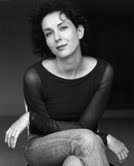
Victoria Dougherty writes fiction, drama, and essays that often revolve around spies, killers, curses and destinies. Her work has been published or profiled in The New York Times, USA Today, International Herald Tribune and elsewhere. Earlier in her career, while living in Prague, she co-founded Black Box Theater, translating, producing and acting in several Czech plays. She lives with her husband and children in Charlottesville, Virginia. Follow Victoria on her blog, Cold. Click here to purchase The Bone Church, and click here to add it on Goodreads.

April 12, 2014
#Subtips–Consent in YA Relationships
Even if you don’t write about young adult relationships, consent and non-consent in fiction needs to be handled intentionally and fairly. Most of us try really hard in our writing to not promote slut-shaming and rape culture and victim-blaming, but writing about healthy, considerate relationships requires more than that.
So what shouldn’t we be doing?
Showing force and manipulation as sexy– sometimes we think hey, isn’t it sexy if he/she wants him/her that badly? And I hope you know the answer there. Selfishness is never sexy.
Allowing our characters to react as if being pressured isn’t a big deal. Power and influence are incredibly strong forces on people, especially young adults, and being pressured for something you’re not ready for is traumatic and frightening. Enough people blow it off already; we shouldn’t let our characters do that, too.
Implying that “no” doesn’t really mean “no.” Playing hard to get can be a fun part of a relationship story, and teasing/flirting can be great. But when you’re building a healthy relationship between your characters and one says no to a date, a call, a text, a kiss, anything– the other one had better respect that. Sometimes we think it’s charming to have the guy take being turned down as an invitation to try harder, and when everyone is well-intentioned and our characters have no ulterior motives, it can be. But in real life, what does that look like? What does that feel like to the person who said no, to know they’re not being taken seriously, that their current wishes aren’t being respected? It’s scary. It’s offensive. We shouldn’t be modeling that as charming. It’s not charming; it’s dangerous.
So what should we be doing?
Calling out the flaws in our characters’ relationships– sometimes we write certain characters who do need to learn respect and boundaries, and relationships don’t always start off as healthy ones. If that’s the case, awesome job for writing realistic people. But call it out in the story. Make it an issue. Don’t let it just resolve itself (hint: that’s not resolving it) because they decided they loved each other. It’s a big deal; make it a big deal in your story. In addition to promoting a culture of consent and respect, those can be great turning points for your characters that will add depth and complexity.
Actively showing consent moments. It doesn’t have to be the super formal and sometimes awkward “can I kiss you?” (But hey, we all love awkwardness because it’s cute!) Work the consent into the flirting. Through hesitation and eye contact and body language. Use words and distance and time to show respect and permission. And if it’s more than just a brief kiss, have your characters check in with each other. Permission for one thing is not permission for all things.
Bringing consent into the relationship itself, not just the physical intimacy. Getting a girl’s number from a friend and calling her when she didn’t know you had her contact info? That’s invasive. In most situations, that’s not okay. Showing up at his house when he didn’t give you his address? Creepy. Invasive. Sometimes we show it as okay, as something that’s charming. For example, in the Vampire Diaries pilot– Stefan showing up on Elena’s doorstep. He’d met her outside the bathroom at school, then scared her in a graveyard– and now he’s at her home, at night? She really shouldn’t be charmed there. Not okay, Stefan.
Consent should be showing up all over the place when you’re writing a healthy relationship. And it doesn’t have to be super serious– it’s fine to keep it light-hearted. But work it in. Yes, you can call me. Come over some time. Can I meet your family? Would you like to go out again?
Home, contact information, being introduced to parents and siblings (especially younger siblings), and even friends mean your character is handing out some measure of trust and vulnerability. Don’t let those things be taken from them– let your characters give them to the other person. And if one (or more) of those things is taken away from them, make it a big deal. Address it. Your readers and your characters deserve a culture of consent and respect.

April 9, 2014
My First Author Event!
Hello, readers! Guess what?
For my first event as an author, I’m appearing on a panel at the Sioux Center Library in Iowa. I’m thrilled to be at such a wonderful library to talk about HOW WE FALL. If you live in the area (Sioux Falls, Sioux City, Omaha, Canton, etc), come say hello!
